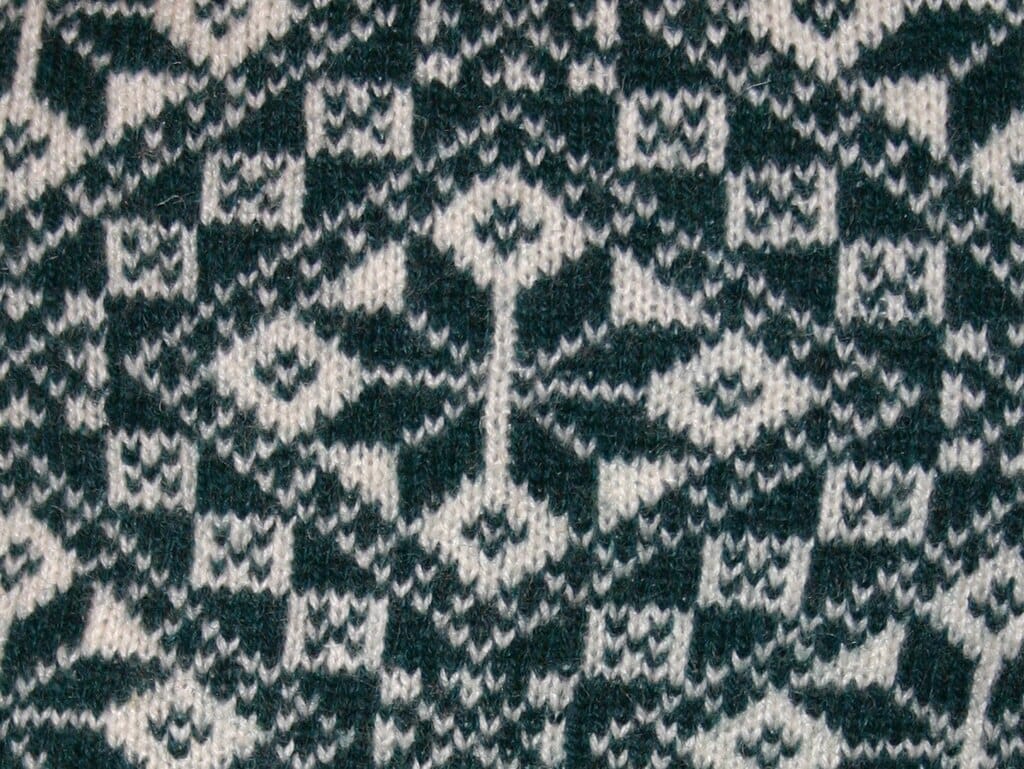Stillness & Star
A poet reflects on the stillness of photos taken during rest and repose. Also, the cultural significance of the eight-point star.

Featured Articles
When the Prince of Heaven Sleeps
Emergence Magazine • 12 Dec 2024 • ~4750 words
Centering images of Muhammad Ali, John Coltrane, DMX, and Mike Tyson in postures of rest and repose, poet Roger Reeves reflects on the stillness of their interior worlds as a protest against the control of capitalistic time.
I’m interested in thinking about Muhammad Ali sleeping, not moving but dreaming, because we remember and think of him as both the butterfly and the bee, someone—a thing—always in flight, in motion, in combat or preparing for it. He was to appear as combustible, as natural as a piston stroking up and down in its cylinder. Ali, the Prince of Heaven, stung, floated, deflected, and dodged even when standing before a roomful of microphones, tape recorders, and anxious and awed reporters awaiting some koan, poem, proverb, or treatise about Vietnam or the Vietcong, Islam, his mood, the gastrointestinal goings-on of his belly, Black power, or the gorilla-like features of an upcoming opponent. Parry, stick, move, feint, dip, slip. Ali, the perpetual motion machine. Ali, the honey-tongued chatterbox. Ali, the child of Scheherazade and Sengbe Pieh. Ali, casting off the shackles, breaking down the walls of the dungeon, letting his people go. Even now, I have to stop myself, stop myself from forcing Ali into some sort of motion, submitting his body to labor in the fashion that we expect him to labor—pugilist in the arena, in the streets, on the slick cover of a magazine.
Rose, Snowflake, Star, Sun
Hazlitt • 18 Dec 2024 • ~3150 words
Jessica Furseth’s essay on the eight-point star explores its universal significance and enduring symbolism across diverse traditions and histories and, on a grander scale, how symbols can travel across cultures.
The notion of protection is probably the strongest thread that ties together all the different cultural uses of the eight-point star. Sometimes the protection is literal—draw a shape and it will show you the way—and other times it’s symbolic, like a knit prayer for safe passage. Other times the protective factor is more ironic: the eight-point star is simply a safe choice to avoid accusations of impropriety. And other times it may just be practical, like if you’re a stonemason in need of a pattern that can be expanded exponentially. And then suddenly, you find yourself in the presence of divine geometry.
Recommended Articles
The Longevity Hot Spots That Weren’t
The New Republic • 25 Nov 2024 • ~5500 words
Our culture has become obsessed with “blue zones,” where people purportedly live longer. But does the underlying research stand up to scrutiny?
. . . in the midst of a culture that’s so focused on expensive supplements and individual health, it can be refreshing to encounter an accessible longevity philosophy that’s dedicated to making daily life healthier for everyone. Not through grueling exercise, fasting, or powdered greens, but through walking, eating delicious foods, and being surrounded by friends and family until old age. Perhaps the true virtue of the blue zones lies in how easily they lend themselves to marketing. In 1952, the psychologist G.D. Wiebe posed the question, after seeing the rise of advertising, “Why can’t you sell brotherhood and rational thinking like you sell soap?” The Blue Zones Project sells one version of a healthy lifestyle, and it can motivate coordination around policies and inspire the community to buy in. Is that such a bad thing? (View Highlight)****
Weird Things in the Sky
London Review of Books • 18 Dec 2024 • ~4300 words
Edmund Gordon reviews Greg Eghigian’s book, “After the Flying Saucers Came: A Global History of the UFO Phenomenon.”
The debunkers are, in some respects, richer subjects for psychological study than the true believers. If you think there’s a realistic chance that aliens are visiting Earth, you’re going to want to make your case as noisily as possible. But if you think it’s all a bit far-fetched, why bother getting involved? Eghigian sees figures such as Menzel as public moralists, intellectual descendants of the early modern sceptics of witchcraft, but that doesn’t explain why they think rational arguments are the best tool for combating beliefs that don’t have a rational basis. You start to suspect that many debunkers are contending with their own latent wish to believe.
The ‘perfect’ predator
Washington Post • 18 Dec 2024 • ~4750 words
How a police chief groomed a Texas town.
Speaking out against law enforcement is especially difficult in small towns, where cops are deeply embedded in the communities they serve. For the residents, there are often fewer avenues to lodge misconduct complaints and less protection from retaliation. Like Maypearl, nearly half of all local police departments across America have fewer than 10 full-time sworn officers. Their chiefs wield tremendous power. A Post investigation identified 47 heads of law enforcement agencies who were charged with crimes involving child sexual abuse from 2005 through 2022. Three-quarters of them worked in departments with less than 10 cops.
Three dead girls and a man on death row. Did lies put him there?
Los Angeles Times • 18 Dec 2024 • ~7250 words
Forty years ago, Michael Anthony Cox was convicted of the murders of three girls in the Sierra Nevada foothills. Years later, the two main witnesses at his trial, also teenagers, recanted, saying police had pressured them into false stories. So why is Cox still on death row?
Contacted by Times reporters in 2024, Napoletano and Sindle said police pressured, manipulated and deceived them when they were teens, leading them to concoct stories about Cox that were not true. Now middle-aged, both women say that they were malleable girls who came up with accounts they thought authorities wanted to hear, to protect themselves and convict a man who detectives seemed certain was guilty. In the years since, Napoletano and Sindle have told authorities that they lied. Both have recanted and said under oath that they gave false testimony on the witness stand. Still, four decades after his conviction, Cox remains incarcerated and maintains his innocence. Though his appeals remain open, the last court filing was in 2020.
The Crumbling Foundation of America’s Military
The Atlantic • 17 Dec 2024 • ~8150 words
The U.S. failed to produce weapons and ammunition fast enough to supply Ukraine. Could it equip its own armed forces in the event of war?
This is not just a bump in the road, and it is not just about munitions. The U.S. military, the richest in the world, confronts a deep, institutional deficiency. If that truth is hard to accept, it's partly because the reality is so profoundly at odds with our history.
Accident or homicide? Medical rulings in arrest-related deaths can dictate what happens to police
AP News • 16 Dec 2024 • ~3900 words
Medical investigations into deaths involving police restraints often face inconsistencies and potential bias, leading to many cases being ruled as accidental rather than homicide. This piece exposes how the classification of deaths as accidents often shields law enforcement from accountability.
Accident was the most common conclusion of medical investigations in AP’s case database. Accidental rulings typically blamed preexisting conditions such as obesity or asthma, or drug use — even when in some cases blood testing did not detect lethal levels. Others faulted “excited delirium,” a controversial diagnosis discredited by major medical associations. Some medical officials based their decisions not on physical evidence, but instead on whether they believed police intended to kill.
‘I want help’: Behind bars, pleas for addiction medications often go nowhere
STAT • 16 Dec 2024 • ~2900 words
Is the US letting down hundreds of thousands of its incarcerated citizens by not providing adequate care for their addictions?
The criminal justice system is, in theory, responsible for providing medical care to hundreds of thousands of Americans with addiction. At any given moment, the U.S. incarcerates roughly 2 million people — by far the most of any country — a majority of whom are estimated to meet the criteria for a substance use disorder. Providing medication for opioid addiction is highly effective: Those receiving methadone or buprenorphine while incarcerated are 75% less likely to eventually die of an overdose, according to one study.
Planet Puppet
n+1 • 16 Dec 2024 • ~8400 words
A weekend at the ventriloquist convention.
Men and women behind me were grunting, lowing like cattle. We were all grunting, lowing like cattle. This was Vent 101, a workshop designed to coach red dotters through the basic tactics of the art. Together, we were unveiling the core of the ventriloquial mystery by practicing the letter B with our teeth clamped together. The general act of learning ventriloquism is tedious, because the puppet is an instrument, and only one half of the theater routine. It is an ancient art, a maze of gestures and shadow gestures, biblical if not Delphic in provenance. I can only describe it as cousinish to learning the violin and getting very good at whistling at the same time. Nimble fingers tweak at little pinches and squeeze-boxes stuck inside the cavities of the ventriloquial dolls, regardless of whether they’re the standard, wooden manikin type (called “hard puppets”) or the squishier, usually more zoological ones (our “soft sculptures”), while the tongue operates flawlessly under confinement.
Century-Scale Storage
Harvard University Gazette • 11 Dec 2024 • ~15200 words
How do you store something digitally for a century? This piece argues that success would depend on a strong societal commitment to digital preservation and the maintenance of archives and libraries.
In the present day, our records, our artifacts, our publications, and our art no longer only inhabit the physical world. The intellectual and cultural output that we rely on and consume predominantly lives on screens, electromagnetically stored in bits and transmitted through packets and wires. Over the past two decades museums and archives have raised and spent billions of dollars to digitize their holdings, to say nothing of the countless individual citizen archivists painstakingly assembling digital collections on their own. Our hardware and software infrastructure is not built for this reality. It is tailored to the short term, without any concern for its long-term durability.




